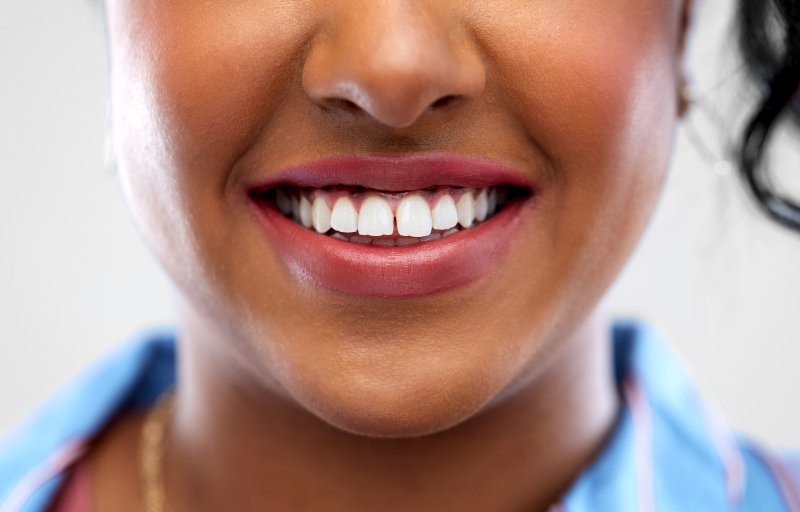
When you were a child, the gap between your two front teeth was considered “cute” and “adorable,” but now that you’re an adult, you find yourself opting for a tight-lipped smile to prevent anyone from seeing it. Gapped teeth are a common problem that can be easily treated by an orthodontist. If you’ve researched ways to fix your smile, you’ve probably read about two different solutions: braces or dental bonding. So, how do you know which method to choose? An orthodontist for adults explains how both treatments work and which one you should pursue.
What is Dental Bonding?
Dental bonding is administered by a cosmetic dentist and is designed to cover imperfections in a person’s smile. The dentist will apply a composite resin that matches your natural tooth color to the one or multiple teeth in question. The plastic resin is shaped and sculpted while on the tooth enamel, and it promises to blend in with the rest of your smile.
Dental bonding is great for treating chipped, cracked, stained, or even gapped teeth.
Why Choose Orthodontics Over Dental Bonding to Close the Gap?
While dental bonding is considered more affordable, it is not meant to last forever, which means you’ll need to replace the resin over time. Plus, bonding is only possible if the gap is minor. Orthodontic treatment, although more time-consuming, is a non-invasive way to straighten your teeth and close the gap.
Traditional metal braces can require 1-3 years of wear in order to achieve desired results, but there are other options you can pursue aside from a bracket and wire set up. In fact, your orthodontist might even offer Invisalign clear aligners or lingual braces that are placed on the backside of your teeth.
No matter which type of braces you and your orthodontist choose for your treatment plan, most work the same way by gently shifting your teeth in the right direction, eliminating unnecessary space and bringing your teeth into proper alignment.
Whereas dental bonding will need to be replaced over the years, teeth that are treated with braces only need a retainer to keep them from shifting back into their original position. By continuing to wear your oral appliance according to your orthodontist’s instructions, you can prevent future orthodontic work.
Now that you know orthodontics offers a greater long-term solution for your gapped teeth, you can feel confident about your decision to receive treatment with braces. If metal isn’t your desired look, make sure to talk to your orthodontist about other forms of treatment to see which one is right for you.
About the Author
Dr. Amin Mason is a board-certified orthodontic specialist who attended The Ohio State University for his undergraduate degree in Electrical and Computer Engineering. After graduating, he went on to attend The Ohio State College of Dentistry, earning his dental degree. Completing his one-year craniofacial research fellowship at the University of Kentucky, he enrolled at the University of Colorado, Denver, and earned his certificate in orthodontics and a Master of Science in Dentistry. Dr. Mason and his team are equipped to treat a variety of smiles. From crooked and overcrowded teeth to misaligned bites and gaps in smiles, he has the tools and skills to ensure you achieve the desired results you want and deserve. For questions about our services, visit our website or call (614) 549-5835.

